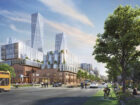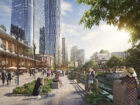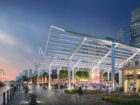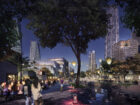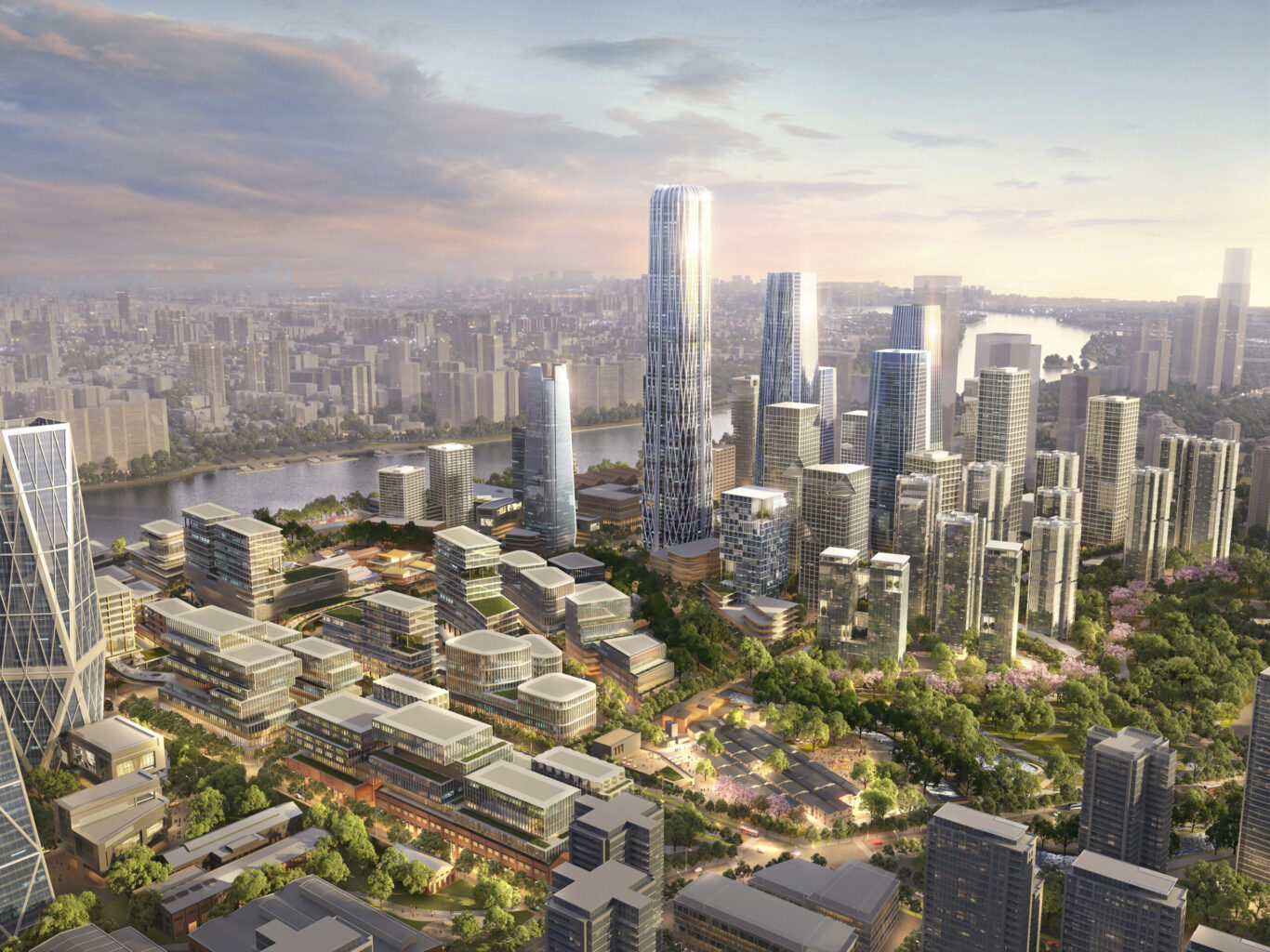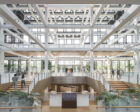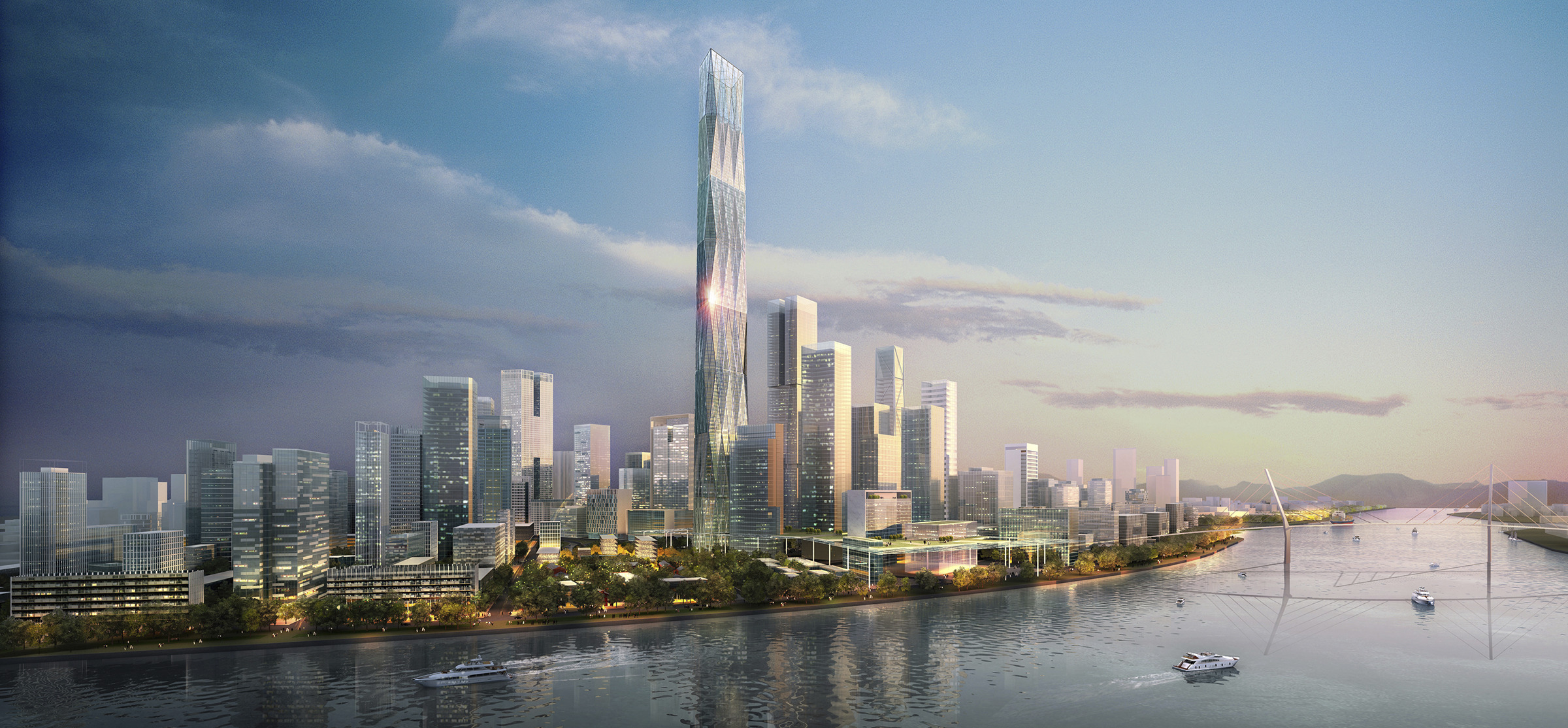Renewing a waterfront heritage district
Adjacent to the new Baietan Central Business District—part of a larger SOM-designed master plan—Julong Bay has a long history as a center for agriculture and industry. The area was known for its flower nurseries dating back to the ninth century, and later became a shipping and manufacturing zone along the back channel of the Pearl River. Today, the area has become a focus for economic revitalization in West Guangzhou.
The project envisions a world-class cultural and commercial district—a destination that provides opportunities for culture, leisure, tech innovation and living. SOM’s urban design builds upon the area’s industrial and commercial heritage to create a vibrant and sustainable community, anchored by its history and sense of place.
